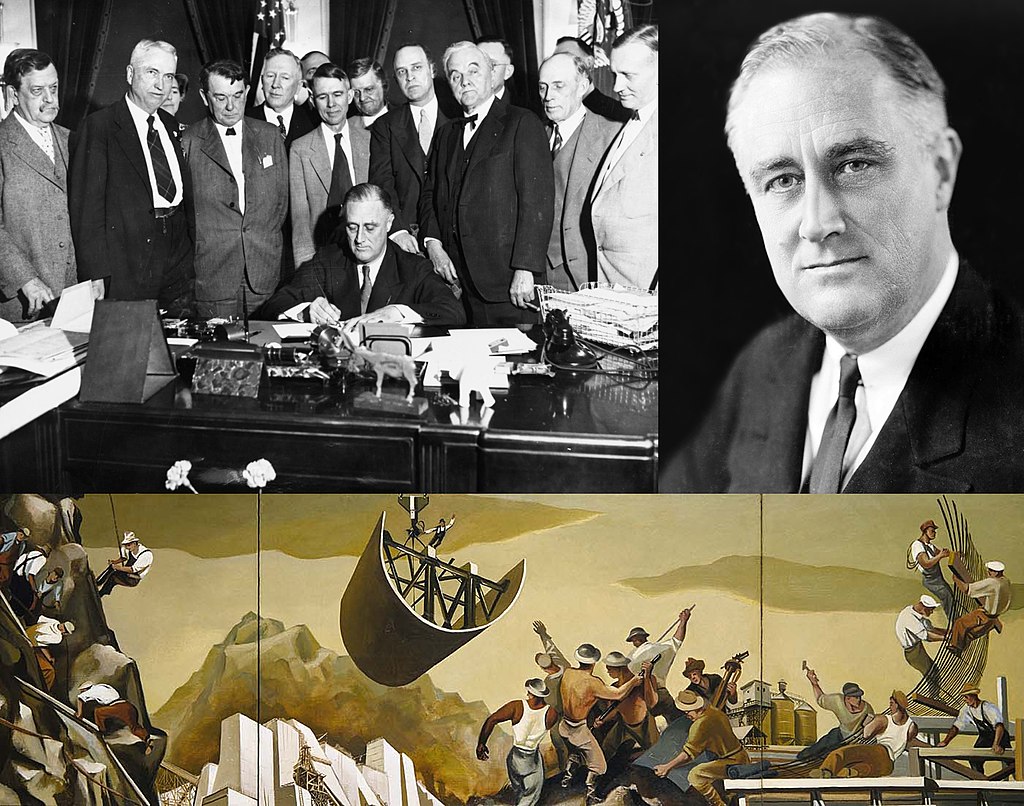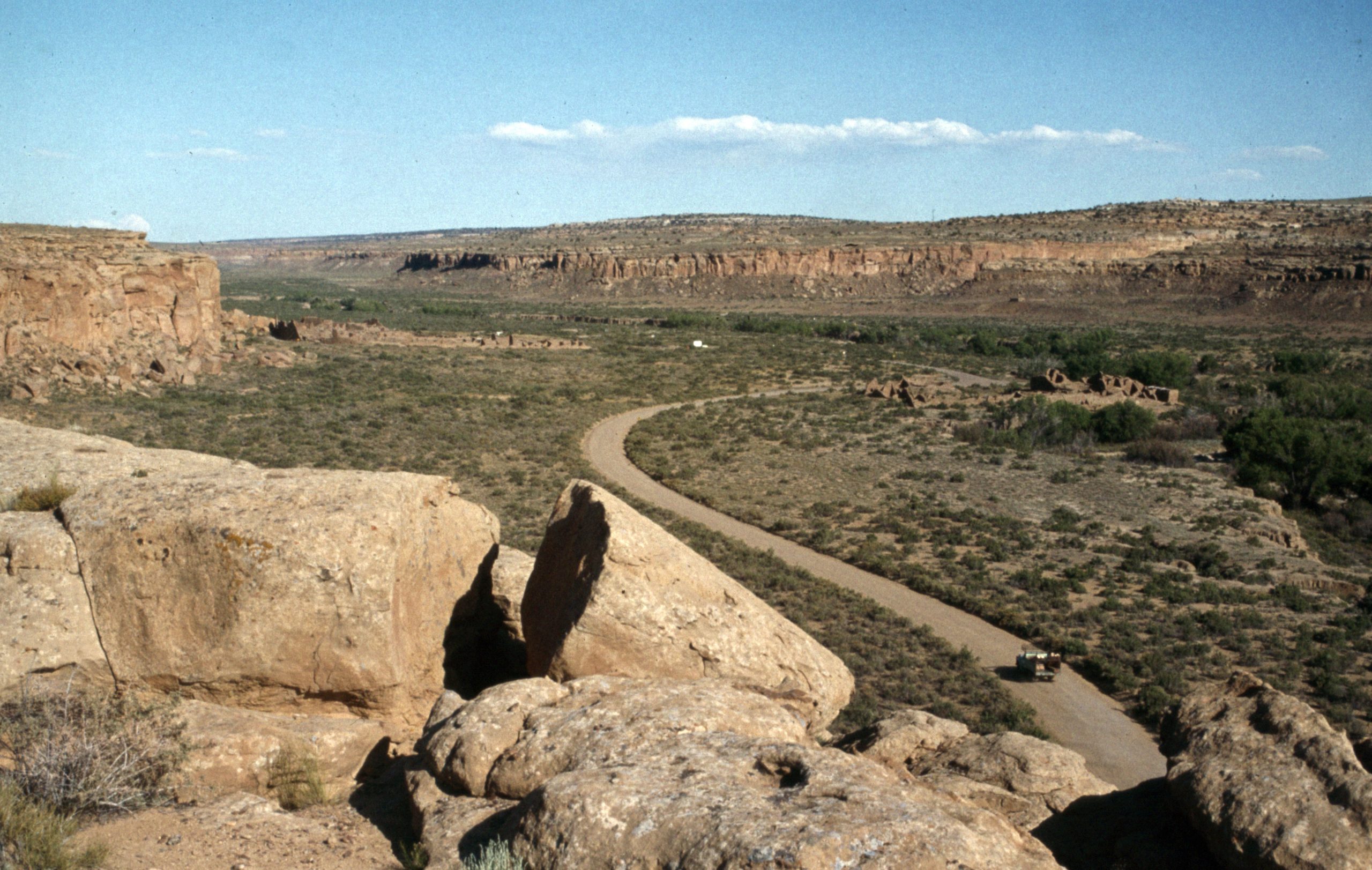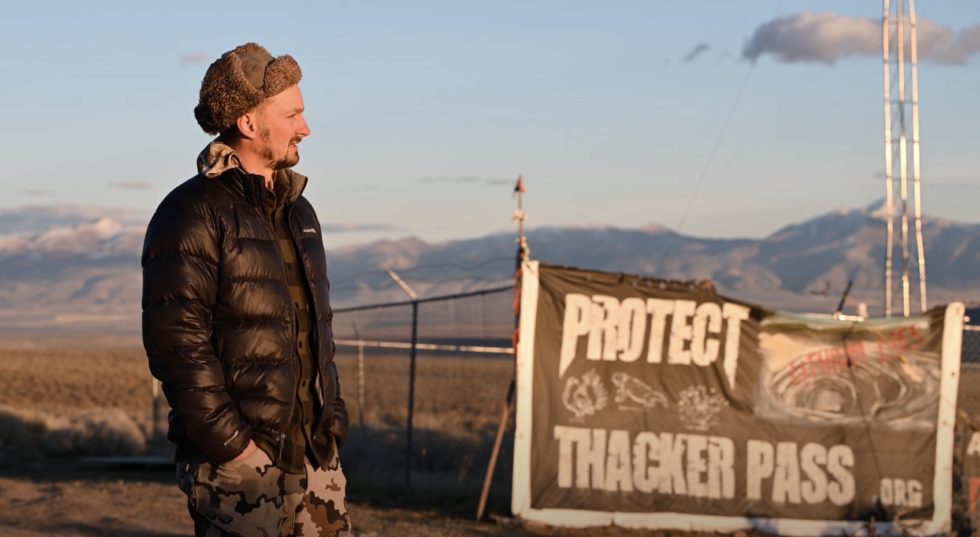
by DGR News Service | Dec 5, 2021 | Direct Action, Human Supremacy, Mining & Drilling, Property & Material Destruction, Repression at Home, The Problem: Civilization, The Solution: Resistance
Sentenced to eight years in prison for acts of sabotage, water protector Jessica Reznicek reflects on her faith-driven resistance.
By Cristina Yurena Zerr
This article was first published in the German newspaper taz, and has been translated and edited for Waging Nonviolence.
On June 28, the federal court in Des Moines, Iowa was silent and filled to capacity. Fifty people were there to witness the sentencing of 40-year old Jessica Reznicek, charged with “conspiracy to damage an energy production facility” and “malicious use of fire.” The prosecution, asking for an extended sentence, argued that Reznicek’s acts could be classified as domestic terrorism.
This was not the first time Reznicek had been on trial, but this time she was facing a prison sentence of up to 20 years.
Sitting across from her was U.S. District Court Judge Rebecca Goodgame Ebinger, the prosecutor and an FBI agent. Numerous police officers in bulletproof vests stood around the courtroom. The defendant was called upon to give her closing speech.
In her loud, clear voice, Reznicek told them about her strong connection to the water. In her childhood she regularly went to the river to swim and play. But that’s no longer possible, she said, because the two rivers that run through Des Moines — Iowa’s capital — are now poisoned by agrobusiness pesticides and waste.
It was for these very personal reasons that she decided to fight the construction of the Dakota Access Pipeline, Reznicek told those in attendance. At least eight leaks, she explained, had already occurred in 2017, with 20,983 gallons of crude oil leeching into soils and the waterways. “I was acting out of desperation,” she said, describing her motivations for sabotage.
“Indigenous tradition teaches us that water is life. Scripture teaches that in the beginning, God created the waters and the earth and that it was good.” With these words, she ended her closing argument. The prison sentence followed shortly thereafter: eight years in federal prison, three years of probation, and a restitution of $3,198,512.70 to the corporation Energy Transfer.
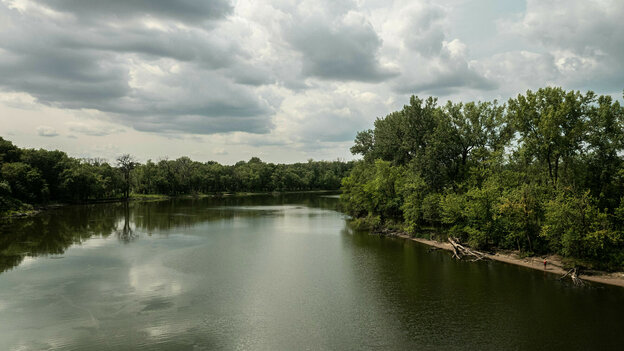
The Des Moines River (Cristina Yurena Zerr)
On July 24, 2017 — two years before sentencing — Jessica Reznicek can be seen in a shaky video with her activist partner Ruby Montoya, a former elementary school teacher who was 27 at the time. They stand in front of a group of journalists next to a busy street. The speech they give would drastically change their lives.
After several months of secretly sabotaging one of the country’s most controversial construction projects, the two women, whose paths would later part, went public. “We acted for our children because the world they inherit does not meet their needs. There are over five major bodies of water here in Iowa, and none of them are clean. After having explored and exhausted all avenues of process, including attending public hearings, gathering signatures for valid requests for environmental impact statements, participating in civil disobedience, hunger strikes, marches and rallies, boycotts and encampments, we saw the clear refusal of our government to hear the people’s demands.”
That’s why Reznicek and Montoya burned five machines at a pipeline construction site in Iowa on election night in November 2016. They would later change their methods, using a welding torch to dismantle the pipeline’s surface-mounted steel valves, delaying construction by weeks. “After the success of this peaceful action, we began to use this tactic up and down the pipeline, throughout Iowa,” the two women say.
But no media reported on their activities; the corporation cited other — false — reasons for the delay. When the activists noticed during an action that oil was already flowing in the pipes, they decided to go public, as they had to admit a kind of defeat.
The two women appear clear and determined on this day in the summer of 2017 as they take turns reciting their pre-written text. “If there are any regrets, it is that we did not act enough.” They end their speeches and are led away in handcuffs by three police officers.
Using the slogan “Mni wiconi,” meaning “Water is Life,” in the Lakota (Sioux) language, a broad movement was organized in 2016 against the construction of the Dakota Access Pipeline. The protest of the Standing Rock Sioux tribe garnered national and international attention.
The tribe sees the construction of the pipeline as a threat to their water supply because the pipeline runs under Lake Oahe, which is near the reservation. Other bodies of water are also at risk because the pipeline crosses under rivers and lakes in many places, which could contaminate the drinking water of many people in the event of an accident. In addition, ancient burial sites and sacred places of great cultural value would be threatened by the construction. Opponents of the pipeline speak of ecological racism — not only because Indigenous rights to self-government would be curtailed, but also because the construction of so-called Man Camps (temporary container cities for construction workers who move from other states) would lead to prostitution and an increase in violence against Indigenous women.
Their government — the Sioux Tribe is a sovereign nation — issued a resolution back in 2015 saying the pipeline “poses a serious risk to the very survival of our tribe and […] would destroy valuable cultural resources.” Construction would also break the Fort Laramie Treaty, which guarantees them the “undisturbed use and occupation” of reservation land. But their arguments went unheard by both the company and the government.
The operating company said the pipeline would not harm the environment, would not affect Indigenous rights and would not pose a threat to drinking water supplies. But the protest, which stretches across several states along the pipeline, has developed into one of the largest environmental movements in the United States. Native Americans from different nations and reservations are joining, along with landowners, environmental organizations and left-wing autonomous movements.
Reznicek first heard about the pipeline when she was released from prison six years ago, after serving a two-month stint for her protest against a U.S. military weapons contractor in Omaha, Nebraska. An organizer from Standing Rock had come to Des Moines to mobilize people for the protest. “I decided that I wanted to learn more about Indigenous ceremony, understanding that I am a white person, I cannot just go in and express my demands. And I also wanted to focus on stopping the Dakota Access Pipeline Project. So I drove up to Standing Rock.”
Where it all began
On a road on the outskirts of Des Moines — a city home to numerous insurance companies — large trees tower above the wooden row houses, providing shade on a hot July day.
Above the porch of one of the houses hangs a small sign that reads “Catholic Worker House.” In front of the back part of the building are tables and benches with people sitting on them. Music is playing, people are singing, someone is asleep on a bench.
In the kitchen of the house, Jessica Reznicek stands in front of the stove and slices five chicken breasts, freeing the meat from the bones. Next to them is a large pot of mashed potatoes, into which she generously spreads butter. “Our guests love butter,” Reznicek laughs. The kitchen looks as if many meals have been cooked there. Posters with anti-war messages and protest slogans are hung around the small room. On the windowsill in front of Reznicek is a statue of a bishop with a rosary around his neck.
Twice a week, Jessica Reznicek cooks for the homeless guests who come here. Usually they eat together in the living room, but since the outbreak of the coronavirus pandemic, the food is distributed through the window.
“I like the days when I’m in charge of the kitchen. It takes my mind off all the things that are going on in my head,” Reznicek says as she begins washing a mountain of dishes.
Two years have passed since her protests were made public. A year ago, Jessica Reznicek moved back into the community, spending time there on house arrest. Here, where it all began, her long journey ends. She has one week left before needing to report to prison.
Just before the food is served, the kitchen and living room fill up. Two of Reznicek’s friends are there, residents of the house and volunteers from outside — together they begin to serve food to the guests.
Reznicek has been in and out of the house for 10 years. Most people know her story: “The one who blew up the pipeline?” asks Jimmy — one of the homeless guests — laughing as he tastes the still-warm mashed potatoes. The fact that she will soon be gone saddens many of the residents. For the majority of them, prison is a familiar place. But no one here has been incarcerated as long as Jessica Reznicek will be.
The Dingman House, named after a late bishop in Des Moines, is one of four side-by-side buildings of the Catholic Worker community. Christianity and anarchism meet here. In these self-organized “houses of hospitality,” which function independently of the church, people live and work among the poor in the spirit of the Sermon on the Mount. The Christian message of social justice and solidarity with the marginalized becomes everyday practice. There is not much overlap with the institutional Catholic Church. In the bathroom, where homeless guests can shower, there are free condoms; trans people find shelter here and women sometimes lead church services.
Preparations for prison
The Berrigan House across the street — named after two priests who became known for their actions of civil disobedience against the Vietnam War — has always been a place of resistance, where protest actions are planned and activists find shelter. This is where Reznicek prepared her actions against the pipeline.
As in the house next door, the walls are covered with posters calling for resistance against war, racism and injustice. It is a colorful, chaotic and untidy atmosphere. Reznicek and her friends Alex and Monty sit at the table in the living room. The two are among her closest supporters. They just had a video conversation with Reznicek’s lawyer to discuss the final steps before she goes to jail.
A month after Reznicek is sentenced to eight years in prison, they launched a campaign called “Water Defenders Are Never Terrorists.” Within a few weeks, they were able to collect thousands of signatures. Their goal: a petition to President Joe Biden and Congress demanding the terrorism charges be dropped.
The list of things to do before Reznicek goes to prison is long: return the electronic ankle bracelet, pick up the copy of her high school transcript she needs so she won’t have to attend classes in jail. T-shirts demanding her release are to be printed. Reznicek also wants to develop photos that Alex will later send to her in prison so she can decorate her cell with them. But they also want to see her favorite musical Rent, go dancing one more time, invite friends and celebrate. There is a lot of laughter when the three get together.

Jessica Reznicek’s supporters Monty and Alex in the Christian Berrigan House. (Cristina Yurena Zerr)
After the meeting, Jessica Reznicek packs a vacuum cleaner and cleaning supplies and heads out. With permission from her probation officer, she started cleaning private homes a year ago. She also worked at a pizzeria from time to time.
Why is Jessica Reznicek willing to spend eight years of her life in prison because of her commitment to clean water? She was studying political science in Des Moines and married when she learned about the Occupy Wall Street movement in 2011. Shortly after, she decided to go to New York for the protests. This meant the end of her marriage. From the East Coast, she began a new life of sorts, always on the move, searching for a way to make her contribution to a more just world.
Reznicek traveled twice to Palestine and Israel, where she was deported for protesting in solidarity with the Palestinian people. She visited the Zapatistas in Mexico and spent time in Central America with the Indigenous people of Guatemala. In South Korea, she protested the construction of a U.S. Navy base. “So I feel like all of these experiences culminated at this point in my life when I heard about the Dakota Access Pipeline.”
The Catholic Worker community in Des Moines was central to her politicization. She stumbled upon the organization after returning to Iowa from New York. There begins what she later calls a conversion: a return to the Christian faith and her Catholic roots. At the same time, this means a radicalization in the struggle against injustice: Jesus Christ is seen Catholic Workers as a revolutionary who stood up for the disenfranchised, for the weak and the poor. He wanted to drive the kings from their thrones and bring justice. And he died on the cross without resisting his judgement.
Three months after Jessica Reznicek made her actions public in 2017, the Berrigan home was surrounded by the FBI. “It was like 4:30 in the morning when they were pounding on the door. The house was actually shaking. I ran downstairs and could see around 50 agents through the window with big guns and vests.”
When she opened the door, the house was stormed by about 50 uniforms. She was thrown to the ground and held at gunpoint, she said.
She then spent a year in hiding, calling it her wanderings. “I wasn’t necessarily underground. I think that I was running and I was hiding, but it was not exclusively from the federal government. I was not hiding from prison. I was hiding from everything.”
When she broke down after 10 months in Colorado, she finally realized she needed help. It won’t come from people or places, Reznicek says, but from her relationship with God. After this experience, she realized she wanted to live in a place where she could encounter God, so she decided to enter a Benedictine convent as a novice. But no sooner does she arrive than Reznicek is again picked up by the FBI and charged. They send her back to Des Moines — to the Berrigan home — to await the verdict under house arrest.
For the last four days before she goes to prison, Jessica Reznicek was given permission to visit the sisters at the convent community in Duluth. After her incarceration, she would like to move there or — if that’s not possible — live as close to the convent as she can.
On August 11th, Benedictine sisters drove Jessica Reznicek to the women’s prison in Wascea, Minnesota, four hours away. There, 714 women currently live behind the walls and fences.
Three hundred miles to the north is the town of Bemidji, home of Energy Transfer, the energy company to which Reznicek will be in debt for the rest of her life. A new pipeline called Line 3 has been under construction at this location for several years. As with the Dakota Access Pipeline, the region’s Indigenous inhabitants — the Anishinaabe and Ojibwe tribes — will be most affected by the project.
“Today I feel sad to be saying my final goodbyes to loved ones,” Reznicek said. “I am strengthened, however, knowing that I’m still standing with integrity during this very important moment in history, as there truly is no other place to be standing at a time like this.”
With these words she takes leave of her friends and turns to face the prison gates.
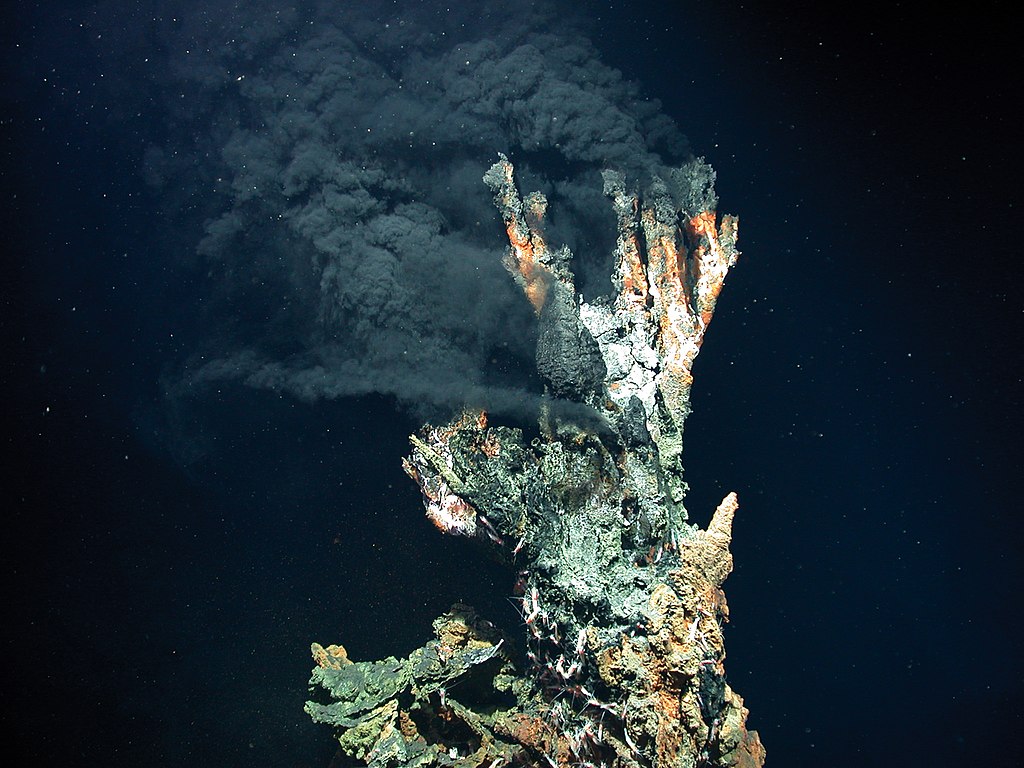
by DGR News Service | Nov 24, 2021 | Biodiversity & Habitat Destruction, Human Supremacy, Mining & Drilling, The Problem: Civilization
This story first appeared in Mongabay.
Editor’s note: O Canada! Welcome to the new wild west. If you liked Deepwater Horizon you will love Deep Sea Mining. This statement pretty much sums it up, “countries could have their chance to EXPLOIT the valuable metals locked in the deep sea.” Corporations love to deal with poorer, less developed countries who can do less by way of supervision because they lack greater resources and capacity.
“Like NORI, TOML began its life as a subsidiary of Nautilus minerals, one of the world’s first deep-sea miners. Just before Nautilus’s project in Papua New Guinea’s waters failed and left the country $157 million in debt, its shareholders created DeepGreen. DeepGreen acquired TOML in early 2020 after Nautilus filed for bankruptcy, the ISA said the Tongan government allowed the transfer and reevaluating the company’s background was not required.”
And mining royalties are paid to the ISA. If this doesn’t sound fishy, I don’t know what does. There never should be a question as to what a corporation’s angle is. Their loyalty always is to the stockholders.
By Ian Morse
- Citizens of countries that sponsor deep-sea mining firms have written to several governments and the International Seabed Authority expressing concern that their nations will struggle to control the companies and may be liable for damages to the ocean as a result.
- Liability is a central issue in the embryonic and risky deep-sea mining industry, because the company that will likely be the first to mine the ocean floor — DeepGreen/The Metals Company — depends on sponsorships from small Pacific island states whose collective GDP is a third its valuation.
- Mining will likely cause widespread damage, scientists say, but the legal definition of environmental damage when it comes to deep-sea mining has yet to be determined.
Pelenatita Kara travels regularly to the outer islands of Tonga, her low-lying Pacific Island home, to educate fishers and farmers about seabed mining. For many of the people she meets, seabed mining is an unfamiliar term. Before Kara began appearing on radio programs, few people knew their government had sponsored a company to mine minerals from the seabed.
“It’s like talking to a Tongan about how cold snow is,” she says. “Inconceivable.”
The Civil Society Forum of Tonga, where Kara works, and several other Pacific-based organizations have written to several governments and the International Seabed Authority (ISA) to express concerns that their countries may end up being responsible for environmental damage that occurs in the mineral-rich Clarion-Clipperton Zone, an expanse of ocean between Hawai‘i and Mexico.
“The Pacific is currently the world’s laboratory for the experiment of Deep Seabed Mining,” the groups wrote to the ISA, the U.N.-affiliated body tasked with regulating the nascent industry. As a state that sponsors a seabed mining company, Tonga has agreed to shoulder a significant amount of responsibility in this fledgling industry that may threaten ecosystems that are barely understood. And if anything goes wrong in the laboratory, Kara is worried that Tonga’s liabilities could exceed its ability to pay. If no one can pay for remediation, Greenpeace notes, that may be even worse.
“My concern is that the liability from any problem with deep-sea mining will just be too much for us,” Kara says.
Another Pacific Island state, Nauru, notified the ISA in June that a contractor it sponsors is applying for the world’s first deep-sea mining exploitation permits. The announcement triggered the “two-year rule,” which compels the ISA to consider the application within that period, regardless of whether the exploitation rules and regulations are completed by then.
Among the rules that may not be decided upon by the deadline is liability: Who is responsible if something goes wrong? Sponsoring states like Nauru, Tonga and Kiribati — which all sponsor contractors owned by Canada-based DeepGreen, now The Metals Company — are required to “ensure compliance” with ISA rules and regulations. If a contractor breaches ISA rules, such as causing greater damage to ocean ecosystems than expected, the contractor may be held liable if the sponsoring state did all they could to enforce strict national laws.
However, it’s not yet clear how these countries can persuade the ISA that they enforced the rules, nor how they can prove that they are able to control the contractors, when the company is foreign-owned. The responsibility of sponsoring states to fund potentially billions of dollars in environmental cleanup depends on the legal definitions of terms like “environmental damage” and “effective control,” which may be as murky two years from now as they are at present.
Myriad problems may occur in the mining area: sediment plumes may travel thousands of kilometers and obstruct fisheries, or damage could spread into other companies’ areas. Scientists don’t know all the possible consequences, in part because these ecosystems are poorly understood. The ISA has proposed the creation of a fund to help cover the costs, but it’s not clear who will pay into it.
“The scales of the areas impacted are so great that restoration is just not feasible,” says Craig Smith, an oceanography professor emeritus at the University of Hawai‘i, who has worked with the ISA since its creation in 1994. “To restore tens or hundreds of thousands of square kilometers would be probably more expensive than the mining operation itself.”
Nauru voices concerns
Just over a decade ago, before Nauru agreed to sponsor a deep-sea mining permit, the government worried that it was going to find itself responsible for paying those damages. The government wrote to the International Tribunal for the Law of the Sea, voicing concerns about the liability it could incur. As a sponsoring state with no experience in deep-sea mining and a small budget to support it, the delegation wanted to make sure that the U.N. did not prioritize rich countries in charting this new frontier in mineral extraction. Nauru and other “developing” countries should have just as great an opportunity to benefit from mining as other countries with more experience in capital-intensive projects, they argued.
Sponsoring states like Nauru are required to ensure their contractors comply with the law but, the delegation wrote, “in reality no amount of measures taken by a sponsoring State could ever fully ‘secure compliance’ of a contractor when the contractor is a separate entity from the State.”
Seabed mining comes with risks — environmental, financial, business, political — which sponsoring states are required to monitor. According to Nauru’s 2010 request, “it is unfortunately not possible for developing States to perform their responsibilities to the same standard or on the same scale as developed States.” If the standards of those responsibilities varied according to the capabilities of states, the Nauru delegation wrote, both poor and rich countries could have their chance to exploit the valuable metals locked in the deep sea.
“Poorer, less developed states, it was argued, would have to do less by way of supervision because they lacked greater resources and capacity,” says Don Anton, who was legal counsel to the tribunal during the decision on behalf of the IUCN, the global conservation authority.
The tribunal, issuing a final court opinion the next year, disagreed. Each state that sponsored a deep-sea miner would be required to uphold the same standards of due diligence and measures that “ensure compliance.” Legal experts generally regarded the decision well, because it prevented contractors from seeking sponsorships with states that placed lower requirements on their activities. However, according to Anton, the decision meant that countries with limited budgets like Nauru have only two choices when they consider deep-sea mining: either sponsor a contractor entirely, or avoid the business altogether.
According to the tribunal’s decision, “you cannot excuse yourself as a sponsoring state by referring to your limited financial or administrative capacity,” says Isabel Feichtner, a law professor at the University of Würzburg in Germany. “And that of course raises the question: To what extent can a small developing state really control a contractor who might just have an office in that state?”
Nauru had just begun sponsoring a private company to explore the mineral riches at the bottom of the sea Clarion-Clipperton Zone. Nauru Ocean Resources Inc. (NORI), initially a subsidiary of Canada-based Nautilus Minerals, transferred its ownership to two Nauru foundations while the founder of Nautilus remained on NORI’s board. As a developing state, Nauru said, this kind of public-private partnership was the only way that it could join mineral exploration.
Nauru discussed the tribunal’s decision behind closed doors, according to a top official there at the time, and the government sought no independent consultation, hearing only guidance from Nautilus. Two months after the tribunal gave its opinion, Nauru officially agreed to sponsor NORI.
Control
After the tribunal’s decision, the European Union recognized that writing the world’s first deep-sea mining rules to govern companies thousands of miles away would be a tall order for countries with little capacity to conduct research.
The EU, whose member states also sponsor mining exploration, began in 2011 a 4.4 million euro ($5.1 million) project to help Pacific island states develop mining codes. However, by 2018, when most states had finished drafting national regulations, the Pacific Network on Globalization (PANG) found that the mining codes did “not sufficiently safeguard the rights of indigenous peoples or protect the environment in line with international law.” In addition, in some cases countries enacted legislation before civil society actors were aware that there was legislation, says PANG executive director Maureen Penjueli.
“In our region, most of our legislation assumes impact is very small, so there’s no reason to consult widely,” she says. “We found in most legislations is that it is assumed it’s only where mining takes place, not where impacts are felt.”
For Kara, mining laws are one thing, but enforcement is another. Sponsoring states must have “effective control” over the companies they sponsor, according to mineral exploration rules, but the ISA has not explicitly defined what that means. For example, the exploration contract for Tonga Offshore Mining Limited (TOML) says that if “control” changes, it must find a new sponsoring state. When DeepGreen acquired TOML in early 2020 after Nautilus filed for bankruptcy, the ISA said the Tongan government allowed the transfer and reevaluating the company’s background was not required.
Kara questions whether Tonga can adequately control TOML, its management, and its activities. TOML is registered in Tonga, but its management consists of Australian and Canadian employees of DeepGreen. It is owned by the Canadian company. Since DeepGreen acquired TOML, the only Tongan national in the company is no longer listed in a management role.
“It’s not enough to be incorporated in the sponsoring state. The sponsoring state must also be able to control the contractor and that raises the question as to the capacity to control,” Feichtner says.
When Kara’s Civil Society Forum of Tonga and others wrote to the ISA, they argued Canada should be the state sponsor of TOML, considering TOML is owned by a Canadian firm. In response, the ISA wrote that the Tongan government “has no objection” to the management changes, so no change was needed.
“Of all the work they’re doing in the area, I don’t know whether there’s any Tongan sitting there, doing the so-called validation and ascertaining what they do. We’re taking all of this at face value,” Kara says. With few resources to track down people who live in Canada or Australia, Kara is worried that Tonga will not be able to hold foreign individuals accountable for problems that may arise.
In merging with a U.S.-based company, DeepGreen became The Metals Company and will be responsible to shareholders in the U.S. The U.S., however, has not signed on to the U.N. convention that guides the ISA, and as such is not bound by ISA regulations, the only authority governing mining in the high seas.
“What I think is pretty clear is that ‘effective control’ means economic, not regulatory, control,” says Duncan Currie, a lawyer who advises conservation groups on ocean law. “So wherever it is, it’s not in Tonga.”
The risks
On Sept. 7, Tonga’s delegation to the IUCN’s global conservation summit in France joined 80% of government agencies that voted for a motion calling for a moratorium on deep-sea mining until more was known about the impacts and implications of policies.
“As a scientist, I am heartened by their decision,” says Douglas McCauley a professor of ocean science at the University of California, Santa Barbara. “The passage of this motion acknowledges research from scientists around the world showing that ocean mining is simply too risky a proposition for the planet and people.”
Tonga’s government continues to sponsor an exploration permit for TOML. According to the latest information, Tonga and TOML have agreed that the company will pay $1.25 in royalties for every ton of nodules mined. That may amount to just 0.16% of the value of the activities the country sponsors, according to scenarios presented to the ISA by a group from the Massachusetts Institute of Technology. Royalties paid to the ISA and then distributed to countries may be around $100,000.
Nauru’s contract with NORI stipulates that the company is not required to pay income tax. DeepGreen has reported in filings to the U.S. Securities and Exchange Commission that royalties will not be finalized until the ISA completes the exploitation code. With the two-year rule, NORI plans to apply for a mining permit, regardless of when the code is written.
“The only substantial economic benefit [Nauru] might derive is from royalty payments, and these are not even specified yet. and on the other hand, it potentially incurs this huge liability if something goes wrong,” Feichtner says.
Like NORI, TOML began its life as a subsidiary of Nautilus minerals, one of the world’s first deep-sea miners. Just before Nautilus’s project in Papua New Guinea’s waters failed and left the country $157 million in debt, its shareholders created DeepGreen.
“I am afraid that Tonga will be another Papua New Guinea,” Kara says. “If they start mining and something happens out there, we don’t have the resources, the expertise, because we need to validate what they’re doing.”
DeepGreen has said it is giving “developing” states like Tonga the opportunity to benefit from seabed mining without shouldering the commercial and technical risk. DeepGreen did not respond to Mongabay’s requests for comment.
“I’m still trying to figure out their angle. Personally, I think DeepGreen is using Pacific islanders to hype their image. I’m still thinking that we were never really the target. The shareholders have always been their target,” Kara says.
She says she doubts the minerals at the bottom of the ocean are needed for the world to transition away from fossil fuels. In a letter to a Tongan newspaper, Kara wrote, “Deep-sea mining is a relic, left over from the extractive economic approaches of the ’60s and ’70s. It has no place in this modern age of a sustainable blue economy. As Pacific Islanders already know — and science is just starting to learn — the deep ocean is connected to shallower waters and the coral reefs and lagoons. What happens in the deep doesn’t stay in the deep.”
